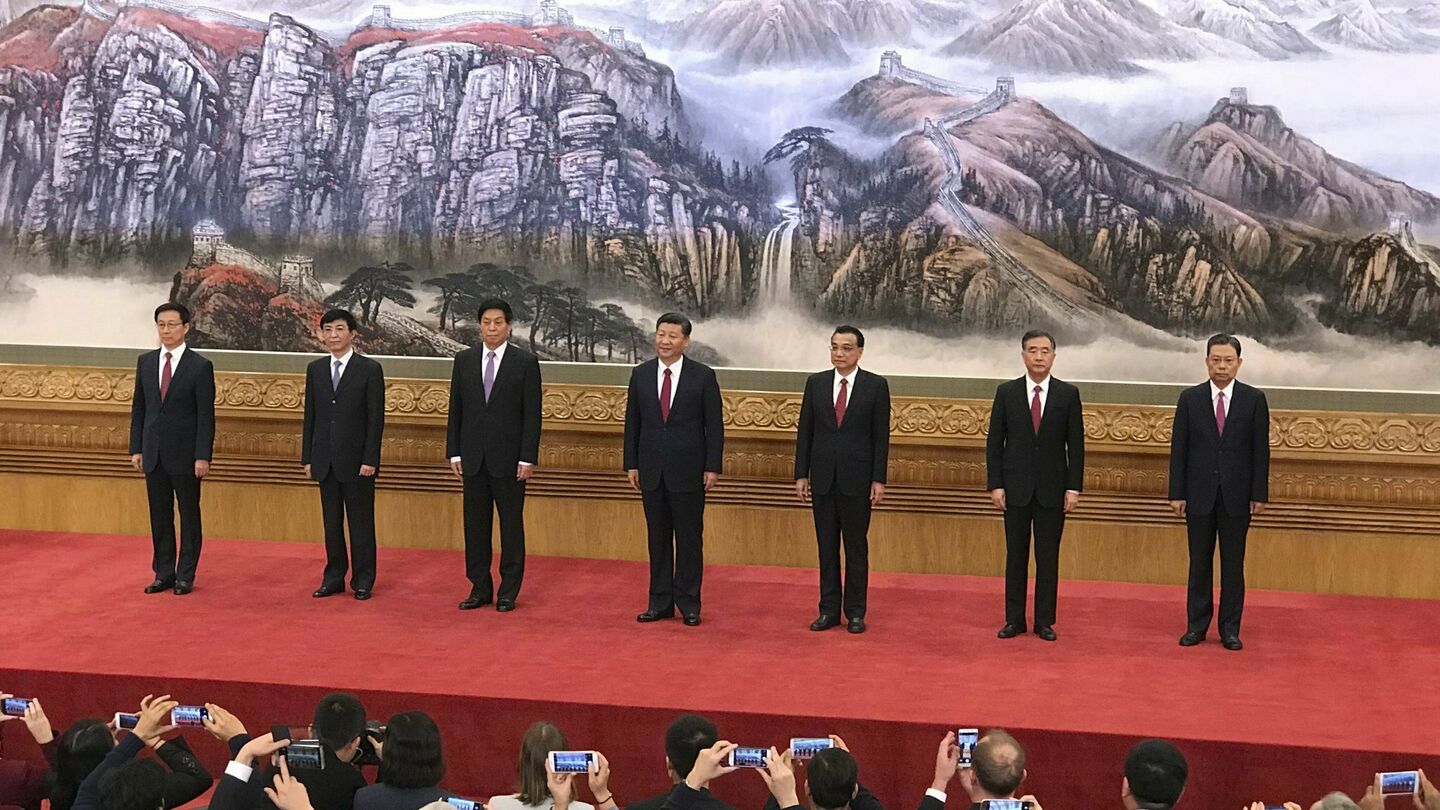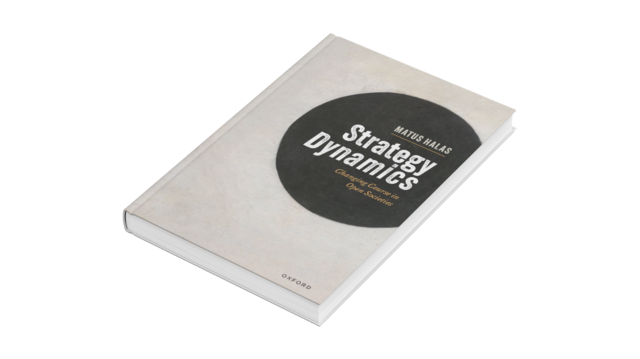19th CPC Congress: Doctrinal Context

Between October 18 and 24, 2017, the Communist Party of China (CPC) held its 19th National Party Congress. National Congresses, recently organized every five years, bring together delegates from various sectors of the party, government, the military, social organizations and the countryside.
The key policy document from the 19th National Party Congress was a report titled “Secure a Decisive Victory in Building a Moderately Prosperous Society in All Respects and Strive for the Great Success of Socialism with Chinese Characteristics for a New Era”, delivered by General Secretary Xi Jinping. Even though the report is pronounced on behalf of the departing Central Committee and its drafting is a matter of wider consultation, General Secretary supervises the whole process. (Xinhua, 2017) The Congress also passed a resolution making amendments to the CPC Party Constitution, the party`s most authoritative document not only on procedural issues but also on substantive questions of theory, strategy, and policy .
Xi Jinping Thought…
Perhaps the most visible step taken by the Congress is the introduction of “Xi Jinping Thought on Socialism with Chinese Characteristics in the New Era” into the CPC Constitution. It is now attached to the chain of doctrines that constitute the party`s “guide to action”: Mao Zedong Thought, Deng Xiaoping Theory, Important Thought of Three Represents (attributed to Jiang Zemin), and Scientific Outlook on Development (attributed to Hu Jintao). (Miller 2017b)

source: flickr.com
Observers noted that Xi Jinping is the first leader since Deng Xiaoping whose contribution is labeled by his own name and that it was previously only Mao Zedong who achieved this recognition during his years in power. Early introduction of the “Xi Jinping Thought” is thus explained as yet another sign of Xi`s power. (see Pei 2017, Lam 2017a) It follows last year`s shift in formal references to the party`s central organ from “Central Committee with Xi Jinping as General Secretary” (used in times of Hu Jintao) to the “Central Committee with Xi Jinping as the core” (a form emulating the phrase used for previous leaders, Jiang Zemin, Deng Xiaoping and Mao Zedong). (Lam 2016; Miller 2016)
However, such comparisons must take into account transformations of the overall political environment. Compared to his predecessors, Xi Jinping faces relatively little doctrinal resistance. Internal frictions do not coalesce into a doctrinal challenge, like when the Gang of Four sought anti-Western foreign policy while resisting economic reform in China and reversal of verdicts inside the party. Neither does Xi meet the opposition of coherent, institutionally based constituencies, like when Deng Xiaoping had to find coexistence with the defenders of the planned economy around Chen Yun. Even the “populist” challenge posed several years ago by Chongqing model of Bo Xilai was removed before Xi Jinping became General Secretary in 2012.
Consequently, while comparisons to Mao are clearly off the mark, and likening Xi`s position to Deng`s ignores qualitative differences between their respective leaderships (Miller 2017a), comparisons to Jiang Zemin can be made, that are more nuanced and more telling.
Jiang`s idea of Three Represents was not included in the CPC Constitution at his “mid-term” Congress in 1997. However, the omission was rather circumstantial. The 1997 Congress was held just months after the death of Deng Xiaoping amid concerns about the country`s future direction. By explicitly including Deng Xiaoping Theory in the CPC Constitution the leadership around Jiang Zemin sought to reassure both domestic and foreign audiences that “reform and opening up” enjoyed consensus within the party. The idea that Jiang did not have enough power to have his full name included in 2002 and that he “had to do with” faceless Three Represents, misses the fact that at the very same congress Jiang`s allies massively joined Politburo, including new “Hu Jintao`s” Standing Committee, and that even though Jiang himself handed over party`s General Secretaryship to Hu, he retained chairmanship of the Central Military Commission for two more years, effectively controlling the military.
… for a New Era
What is meant by the phrase “for a New Era”?
The term is meant to be a corollary to Deng Xiaoping`s Three Steps Strategy, proposed in the 1980s as an outline of China`s development. The first step was to double China`s 1980 GNP by the year 1990, to provide for people`s basic needs, such as food and clothing. Second, to double the 1990 GNP again by 2000, to provide for people`s decent life. And third, to raise the per capita GNP to the level of middle-developed countries by mid-21 century, and to basically complete socialist modernization. (“The Three-Step Development Strategy”)

source: en.kremlin.ru
Still in the 1980s, the term “moderately prosperous society” appeared, as a milestone within the long third step, to be achieved by 2020. It was particularly popularized during Hu Jintao`s years, when it acquired a somewhat egalitarian spin, implying policies benefiting rural population and redistribution between rich and poor provinces.
As Xi Jinping took over, “moderately prosperous society” was subsumed under the so-called Two Centenary Goals. The First Centenary Goal remained to double China`s 2010 GDP and complete building of the moderately prosperous society by 2020, i.e. by the Hundredth Anniversary of the founding of the CPC in 2021. The Second Centenary Goal was to transform China into “modern socialist country” by 2049, i.e. by the Hundredth Anniversary of the founding of the People` s Republic. Such a country would be on its way to becoming "prosperous, strong, democratic, culturally advanced and harmonious” (“The Two Centenary Goals”). These adjectives are canonical, and they indicate strategic directions; the 19th Congress added “beautiful”.
At the current pace of growth, the First Centenary Goal will be reached as expected. The “New Era” seems to be the period which is to follow, with Xi Jinping Thought as a blueprint for that new period. However, opinions among Chinese theorists differ, and some put the beginning to as early as 2017, or even 2012. The preferences seem to reflect different opinions about at what point in time China`s main problem ceased to be simply a “backward social production”.
A new principal contradiction
Central theoretical innovation rests in a new identification of what Chinese Marxism classics call “principal contradiction”.
In Mao Zedong Thought, “contradiction” is the relationship between two opposites, with internal contradictions being decisive determinants of qualitative change. One of them can always be identified as a “principal contradiction”, “… whose existence and development determine or influence the existence and development of the other contradictions.” (Mao, On Contradiction, 1937) Correct identification of the principal contradiction is a prerequisite of any sensible political strategy. Crucially, as the overall situation fluctuates, the principal contradiction can change and even if its physical manifestations persist, it ceases to have determinative force. That is the intuitive core of Mao`s doctrine which combines single-mindedness with sometimes mind-boggling pragmatism.
In Mao`s post-1949 writings the principal contradiction oscillated around class struggles. In Deng Xiaoping Theory, which is the doctrine applying Marxism in the period after 1978, the principal contradiction is seen in “ever-growing material and cultural needs of the people” and “backward social production”. This interpretation constituted theoretical justification for a developmental strategy of reform and opening up and dominated Deng Xiaoping, Jiang Zemin and Hu Jintao`s eras. (see “CPC Constitution…”, 2012, General Program)
The Xi Jinping`s Report to the 19th Congress turned the attention to a new principal contradiction. It is the one between “unbalanced and inadequate development” and “people`s ever-growing needs for a better life”. The authoritative argument for making the shifts goes like this: China is now a world leader in many areas of production, and in some areas, it even suffers from overproduction. The total volume of production is sufficient, but the quality and overall balance have become a problem. Consequently, the policies based on the old principal contradiction are increasingly unable to contribute to the improvement of people`s lives. (Yang Weimin 2017)
This may look like a significant correction, but in substance, the departure from the party doctrine of previous years is not that great. Similar concerns were already outlined in documents from Hu Jintao`s era. (see “Firmly march on the path of socialism with Chinese characteristics…”, 2012) And they are little different from what even domestic observers have been saying for a while now: that one-sided orientation at raising GNP per capita is producing costs the country and society has to address. (for an overview written at the end of Hu Jintao era, see Li 2011)
What is new is an elevation in status for these goals, and personal weight Xi Jinping is putting behind them. To put it somewhat emphatically (as it very likely was the intention), Xi Jinping Thought appears to be sort of new social contract. It can be seen as a definitive choice regarding the future basis of legitimacy for party leadership, not dependent on economic growth, but rather setting the agenda of increased quality of life and of China`s global standing. Other statutory changes made to the constitution all seem to lead in the same direction.
About the author
Michal Vavřík works at the Department of Law, Politics and Public Administration of Hebei Normal University in Shijiazhuang. He is interested in connections between ideology, geopolitics and international affairs.
Some sources consulted in writing this article:
Constitution of the Communist Party of China Revised and adopted at the Eighteenth National Congress of the Communist Party of China on November 14, 2012. Available at: http://www.idcpc.org.cn/english/cpcbrief/partyconstitution/index.html
Full text of the resolution on CPC Central Committee report. (2017) Available at: http://www.chinadaily.com.cn/china/19thcpcnationalcongress/2017-10/24/content_33656505.htm
Firmly march on the path of socialism with Chinese characteristics and strive to complete the building of a moderately prosperous society in all respects. Report to the Eighteenth National Congress of the Communist Party of China. (2012) Zhongguowang. Available at: http://www.china.org.cn/china/18th_cpc_congress/2012-11/16/content_27137540.htm
Lam, Willy Wo-Lap (2017) Has Xi Jinping Become “Emperor for Life”? China Brief. Available at: https://jamestown.org/program/xi-jinping-become-emperor-life/
Lam, Willy Wo-Lap (2016) Xi Jinping Uses New “Leadership Core” Status to Boost His Faction. China Brief. Available at: https://jamestown.org/program/xi-jinping-uses-new-leadership-core-status-boost-faction/
Li, Cheng (2011) Introduction: A Champion for Chinese Optimism and Exceptionalism. In: Hu Angang: China in 2020: a new type of superpower. Washington: The Brookings Institution, pp. xv – xl.
Mao Zedong (1937/2004) On Contradiction. Marxists.org. Available at: https://www.marxists.org/reference/archive/mao/selected-works/volume-1/mswv1_17.htm
Miller, Alice (2016) “Core” Leaders, “Authoritative Persons,” and Reform Pushback. China Leadership Monitor, No. 50. Available at: https://www.hoover.org/sites/default/files/research/docs/clm50am.pdf
Miller, Alice (2017a) What would Deng Do? China Leadership Monitor, Issue 52. Available at: https://www.hoover.org/sites/default/files/research/docs/clm52am.pdf
Miller, Alice (2017b) Xi Jinping and the Party`s “Guiding Ideology”. China Leadership Monitor, Issue 54. Available at: https://www.hoover.org/sites/default/files/research/docs/clm54am.pdf (29.10.2017)
Pei, Minxin (2017) The Paradox of power in the Xi Jinping era. Asia Times, October 28, 2017. Available at: http://www.atimes.com/article/paradox-power-xi-jinping-era/
Press conference after the closing of the 19th CPC National Congress. China Global Television Network, October 26th, 2017.
Resolution of the 19th National Congress of the Communist Party of China on the Revised Constitution of the Communist Party of China. Available at: http://www.china.org.cn/chinese/2017-10/26/content_41796790.htm
Secure a Decisive Victory in Building a Moderately Prosperous Society in All Respects and Strive for the Great Success of Socialism with Chinese Characteristics for a New Era. China Daily. Available at: http://www.chinadaily.com.cn/china/19thcpcnationalcongress/2017-11/04/content_34115212.htm
The Three-Step Development Strategy. Zhongguowang. Available at: http://www.china.org.cn/english/features/38199.htm
The Two Centenary Goals. Zhongguowang. Available at: http://www.china.com.cn/guoqing/word-en/2016-07/22/content_38939307.htm
Xinhua (2017) How is the National Congress report written? Available at: http://www.china.org.cn/china/19th_cpc_congress/2017-10/28/content_41810373.htm
Yang Weimin (2017) Press conference after the closing of the 19th CPC National Congress: Q&A. China Global Television Network, October 26th, 2017.






